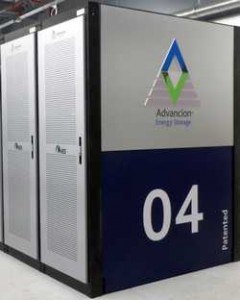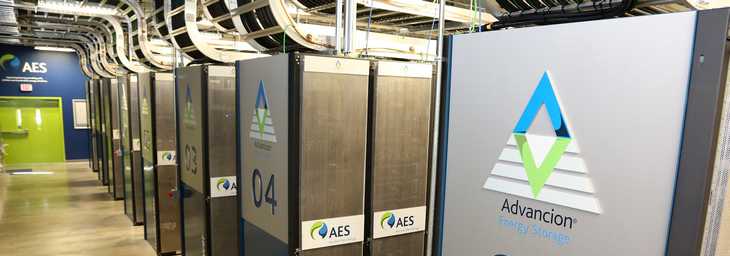The global energy market is undergoing a low-carbon transformation, with grid-scale battery-based technologies providing reliable alternatives to traditional peaking power plants and pumped hydroelectric storage projects. Across the world, power station upgrades are starting to deliver a dependable and cost-competitive means of balancing load and bringing renewable energy onto the networks.

In Europe, the growth is expected to be particularly marked, says Andreea Străchinescu, European Commission Head of Unit for New Energy Technologies, Innovation and Clean Coal. “A growing number of renewable energy sources in Europe will require breakthrough technologies for grid stabilization and balancing. Electrical energy storage can play a key role in the enhanced use of renewable energy and development of smart grids in Europe. Emerging market models will be pivotal for large scale deployment of electrical energy storage in Europe.”
Indeed, according to Cyrille Brisson, EMEA Marketing Vice President – Electrical Sector at power management company Eaton, battery-based storage technologies are helping to usher in a new period of energy flexibility across European markets. “Energy storage is a game-changer, it is making electricity grids greener and more responsive. These battery-based systems are modular and scalable, and can be located in diverse geographic locations, enabling grid operators to balance infrastructure in the most efficient manner. They provide highly-desirable solutions.”
A good example of this technology adoption can be seen in Vlissingen in the Netherlands, where a 10 MW battery-based array began commercial operation earlier this year. The array, which comprises a total of 45,000 lithium ion batteries, will allow transmission system operator TenneT to compete with traditional generators to provide balancing services to the Netherlands, Germany, Switzerland and Austria. The array will enable greater levels of renewable energy integration, enhance grid reliability and reduce emissions and costs by providing fast response balancing services to the electric grid.
Similarly, in Northern Ireland, 10 MW of interconnected battery-based energy storage has been installed at the Kilroot Power Station near Carrickfergus. The installation marks the first step towards a planned 100 MW array adjacent to the coal, oil and biomass fuelled power station in an attempt to develop a dependable, smart and cost-competitive means to support the development of a low carbon electricity system.
In both cases, the arrays are built on Advancion technology from US-based AES Energy Storage, which owns and operates the world’s largest energy storage fleet, amounting to 116 MW in total, with a further 268 MW in construction or late stage development. Power management company Eaton offers AES’s Advancion technology as part of its grid-scale, integrated energy storage portfolio throughout Europe, the Middle East, and Africa, and Brisson sees huge potential for the technology’s adoption across markets.
A complete alternative to peaking power plants
“The Advancion system provides a complete alternative to peaking power plants, and that makes it a compelling option for electricity providers,” he says. “Firstly, it is absolutely dependable, being constructed from certified, long-life and high-efficiency sealed batteries. It also features a modular architecture where additional nodes can be added for increased output. The scalable design allows for standard modular configurations to over 1,000 MW, and from 15-minutes of duration to over four hours without any reengineering. The technology is designed to be ‘always available’, helping load serving companies to meet system and local capacity requirements. It’s a very refined package.”
The advantages to grid operators are manifest. In terms of frequency regulation, Advancion can provide critical grid balancing, with frequency response in less than a second to stabilise an interconnection. Also, by shifting reserve capacity to battery storage, generators can sell more power from the same plant. System reliability is increased through generation and regulating that is online and can begin responding immediately.
Potential for commercial and industrial applications
Meanwhile, by locating Advancion in a critical load pocket, utilities can meet peak demand needs and receive twice the flexible range of a typical peaker plant to integrate renewable generation, while reducing system-wide emissions. And there is the potential for commercial and industrial applications, too, providing demand charge reduction and critical backup power to large facilities with energy intensive operations.
The technology is finding application beyond just the EMEA region. Globally, AES has delivered 2.5 million MWh of service, comfortably making it the most comprehensive fleet of battery-based energy storage in the world.

The potential for Advancion in India is phenomenal. The Indian power market is expected to grow by up to 350 GW by 2022, from current installed capacity of 288 GW. In addition, there is a target to install 160 GW of solar and wind generation. While this rapid growth in renewables will help improve energy security, increase access to electricity, reduce reliance on energy imports, and reduce air emissions, it will also strain the system, as the current infrastructure is not designed to meet these modern demands. Energy storage can transform this infrastructure to deliver more value from the initial investment, while ensuring a clean, unbreakable grid that fuels India’s economic prosperity for decades to come.
“There is potential for the technology all over the globe,” adds Brisson. “By providing market-leading, innovative energy storage systems that span from residential to commercial, industrial and utility customers, Eaton will be able to mitigate the investment needed for, and the charges and emissions resulting from peak demand infrastructure. The widespread deployment of systems enabling peak capacity, flexible generation and grid services, coupled with the easy consumption of renewables, will help a smarter grid meet environmental targets.”

